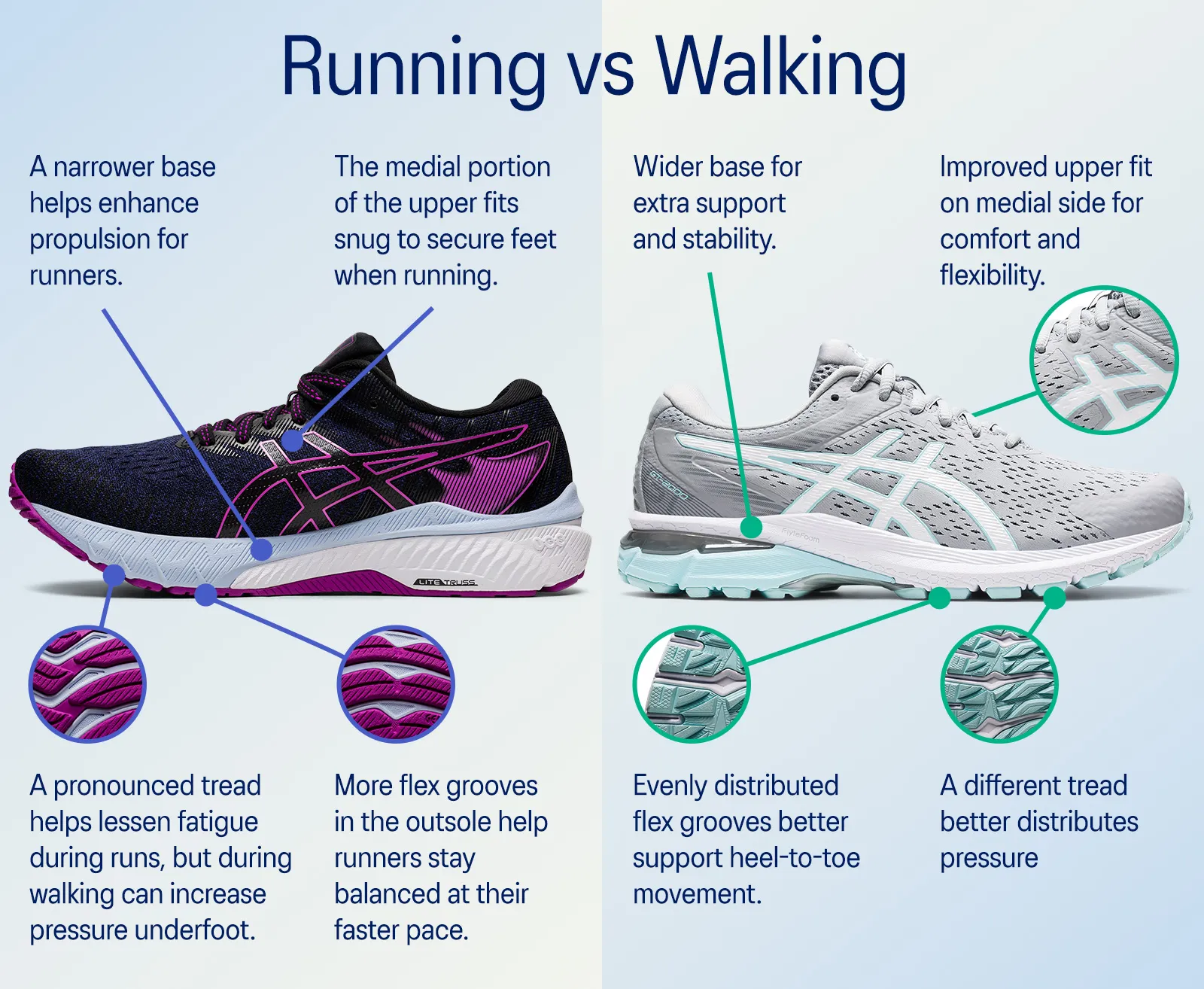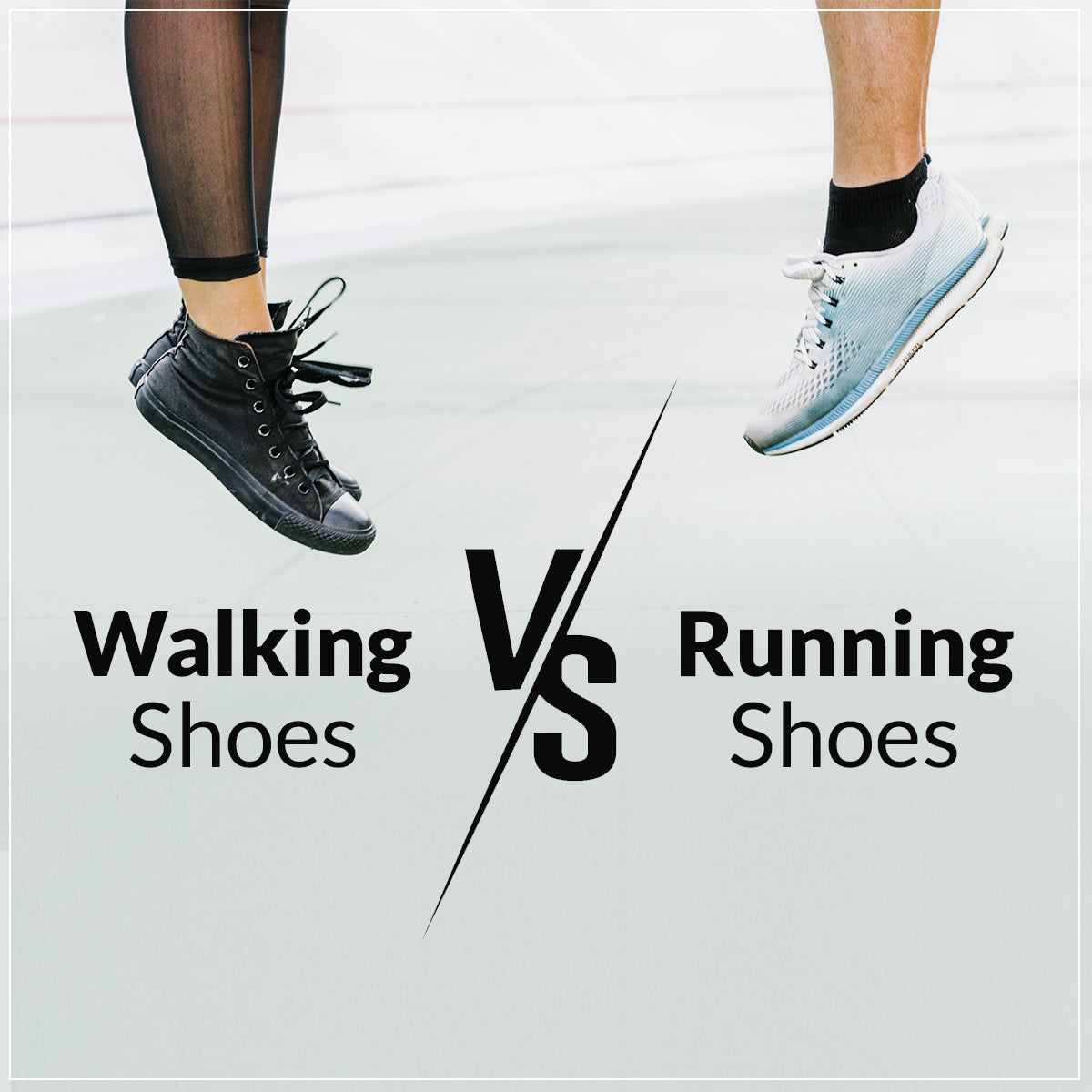Discover The Perfect Fit: Running vs Walking Shoes For Your Active Lifestyle
Choosing between running and walking shoes isn’t about picking footwear—it’s about selecting the right engineering for your movement patterns. The biomechanical differences between these activities demand specialized shoe designs that can either enhance your performance or lead to discomfort and injury. As someone who has tested hundreds of athletic shoes, I’ve witnessed how the wrong choice can transform an enjoyable activity into a painful experience. The distinction between running vs walking shoes extends beyond marketing—it’s rooted in physics, anatomy, and decades of sports science research.
The Biomechanical Divide: Understanding Your Foot’s Motion
When we examine the fundamental mechanics of human locomotion, running and walking represent distinctly different movement patterns. Dr. Casey Kerrigan, former professor of physical medicine and rehabilitation at Harvard University, conducted research showing that “running generates impact forces equivalent to 2-3 times your body weight, while walking produces forces of about 1.5 times body weight.” This dramatic difference in impact forces explains why running shoes require significantly more cushioning in specific areas. The gait cycle differs substantially between these activities—walking involves a heel-to-toe rolling motion with one foot always contacting the ground, whereas running includes a flight phase where both feet are airborne simultaneously. This flight phase creates the need for shoes that can handle higher vertical loads and provide stability during mid-foot or forefoot strikes that many runners naturally adopt. Understanding these biomechanical principles isn’t academic—it’s practical knowledge that directly influences your comfort and injury prevention during exercise.

Engineering Differences: Cushioning and Flexibility
The structural engineering of running versus walking shoes addresses the unique demands of each activity through specialized cushioning systems and flexibility patterns. Running shoes typically feature thicker, more responsive midsoles made from advanced materials like polyurethane or EVA foam that compress and rebound with each stride. According to research from the University of Calgary’s Human Performance Laboratory, the optimal running shoe provides “energy return through proprietary foam compounds that can improve running economy by 4-5%.” Walking shoes prioritize consistent support throughout the entire foot strike rather than explosive energy return. Their flexibility is concentrated in the forefoot area to facilitate the natural heel-to-toe rolling motion, whereas running shoes often have flexibility points that correspond to where runners typically push off. The heel counter—the rigid structure that cups your heel—differs significantly too. Running shoes have more substantial heel counters to stabilize the foot during the higher-impact landing phase, while walking shoes feature lower-profile heel counters that allow for a more natural gait pattern without restricting movement.

Weight and Responsiveness: The Performance Equation
The weight difference between running and walking shoes represents one of the most noticeable distinctions when you hold them side by side. Running shoes are typically lighter—often weighing between 200-300 grams for men’s models—because every extra gram requires additional energy to propel forward over thousands of strides. Celebrated running coach Jack Daniels calculated in his book “Daniels’ Running Formula” that “for every 100 grams of shoe weight added, a runner’s oxygen consumption increases by approximately 1%.” This explains why the running shoe industry invests millions in developing lighter materials without compromising cushioning or durability. Walking shoes, conversely, can afford to be slightly heavier (typically 300-400 grams) since the energy cost of additional weight is less consequential at walking paces. The responsiveness—how quickly the shoe returns energy to your stride—also differs markedly. Running shoes are designed with foams and plate technologies that create a spring-like effect, while walking shoes focus on consistent comfort rather than propulsive characteristics. This fundamental difference in design philosophy directly impacts how your muscles work during each activity.
Specialization Matters: Why One Shoe Can’t Serve Both Purposes
Many active individuals wonder if they can simply purchase one pair of athletic shoes for both running and walking, but this compromise often leads to suboptimal experiences in both activities. The problem isn’t just about comfort—it’s about injury prevention. A study published in the British Journal of Sports Medicine found that “runners who used shoes specifically designed for their foot type and gait pattern had 25% fewer injuries than those who used generic athletic shoes.” When you use walking shoes for running, the typically flatter and less responsive midsole fails to adequately manage the higher impact forces, potentially leading to shin splints, stress fractures, or knee pain. Conversely, running shoes used for extensive walking can create instability during the slower, more deliberate walking gait because their heightened cushioning and rocker designs are optimized for forward momentum rather than stability at slower speeds. The specialization extends to the upper materials too—running shoes often use more breathable, lightweight meshes to manage heat buildup during intense activity, while walking shoes may use more structured materials that provide support during longer duration, lower-intensity use.

Footwear Industry Perspectives: What the Experts Say
The distinction between running and walking shoes isn’t merely theoretical—it’s reflected in how major footwear companies approach product development. As a product manager at a leading sportswear company once explained to me, “We maintain separate design teams, research budgets, and testing protocols for our running versus walking lines because the biomechanical requirements are fundamentally different.” Industry leaders like Brooks Running have dedicated walking shoe divisions that focus exclusively on the needs of walkers, with features like full-length DNA LOFT cushioning that provides comfort without the excessive bounce that runners seek. Meanwhile, their running divisions develop technologies like GuideRails that focus on preventing excess joint movement during high-impact activities. This specialization within the industry itself validates the importance of choosing activity-specific footwear. When you understand that companies invest millions in research and development to create shoes optimized for specific movement patterns, it becomes clear why the choice between running vs walking shoes deserves careful consideration rather than treating them as interchangeable products.
Making the Right Choice: Factors Beyond the Activity
Selecting between running and walking shoes involves considerations beyond your primary activity, including your weight, foot shape, existing injuries, and even the surfaces you frequent. Heavier individuals typically benefit from shoes with additional cushioning and support regardless of activity type, while those with high arches might require different features than those with flat feet. The surface you use most often dramatically influences your ideal shoe choice—running on trails demands outsoles with aggressive lugs for traction, while road running requires durable rubber compounds that withstand pavement abrasion. Walking shoes for urban environments often prioritize style alongside function, with designs that transition comfortably from park paths to casual settings. Your personal biomechanics play a crucial role too—overpronators (those whose feet roll inward excessively) need stability features that differ between running and walking models. Understanding these nuanced factors transforms the selection process from guessing to informed decision-making, ensuring your footwear supports rather than hinders your active lifestyle.

Investment Perspective: Cost Versus Value in Athletic Footwear
The financial aspect of choosing between specialized running and walking shoes often gives people pause, but understanding the value proposition helps justify the investment. High-quality running shoes typically range from $120-$180, while walking shoes generally cost between $80-$140. This price difference reflects the advanced materials and technologies in running shoes designed to manage extreme forces. However, viewing this as merely an expense misses the broader picture—proper footwear represents an investment in your long-term joint health and activity sustainability. When we consider that a quality pair of running shoes should be replaced every 300-500 miles, the annual cost for a regular runner logging 20 miles weekly amounts to approximately $200-$300—significantly less than the co-pays for physical therapy or treatment of footwear-related injuries. Many specialty running stores offer gait analysis services included in the shoe price, providing personalized recommendations that extend beyond what online algorithms can determine. This professional fitting service alone can prevent costly mistakes that lead to discomfort or injury, making the initial investment in proper footwear economically sensible in the long term.
The Evolution of Athletic Footwear: Historical Context
Understanding how running and walking shoes evolved separately provides valuable context for their current specialization. In the early 20th century, athletic shoes were minimal leather constructions with thin rubber soles—the concept of activity-specific footwear didn’t exist. The modern running shoe emerged in the 1970s with the jogging boom, pioneered by companies like Nike whose waffle sole design provided better traction. Bill Bowerman, Nike’s co-founder, famously experimented with rubber poured into his wife’s waffle iron to create the prototype—an innovation specifically addressing runners’ needs for lightweight traction. Walking shoes developed as a distinct category later, emerging prominently in the 1990s as fitness walking gained popularity. The Rockport brand pioneered many walking shoe technologies, including the introduction of dress shoe comfort features into athletic-inspired designs. This historical divergence explains why today’s running vs walking shoes represent decades of specialized research and development rather than marketing inventions. The evolution continues today with new materials like sustainable foams and 3D-printed midsoles further refining the distinction between these footwear categories.

Finding Your Perfect Match: A Practical Guide
Identifying the ideal pair of shoes for your needs requires a methodical approach that combines self-assessment with expert guidance. Begin by honestly evaluating your primary activity—if you run more than 10 miles weekly, prioritize running shoes; if you predominantly walk for exercise, focus on walking models. Consider getting a professional gait analysis at a specialty store, where trained staff can observe your movement patterns and recommend specific models. When trying shoes, do so later in the day when your feet are naturally slightly swollen, and wear the same socks you use for exercise. Leave about a thumb’s width of space between your longest toe and the shoe’s end to accommodate foot swelling during activity. Test the shoes on an appropriate surface—many running stores have treadmills or allow brief outdoor testing. Remember that the best shoes feel comfortable immediately without significant “break-in” periods. For those who both run and walk regularly, consider owning dedicated pairs for each activity—the investment in specialized footwear pays dividends in comfort, performance, and injury prevention throughout your active years.
The distinction between running vs walking shoes represents more than footwear categorization—it embodies the principle that equipment should match activity demands. Your choice directly influences not just your comfort but your long-term joint health and performance potential. Whether you’re training for a marathon or enjoying daily neighborhood walks, selecting the right footwear transforms exercise from obligation to pleasure. The perfect shoe doesn’t just fit your foot—it fits your movement.
